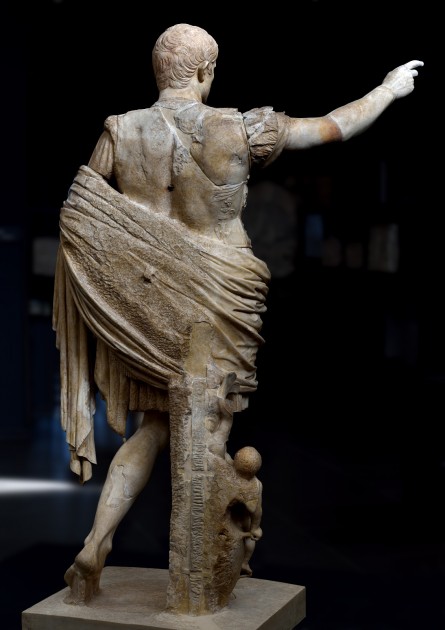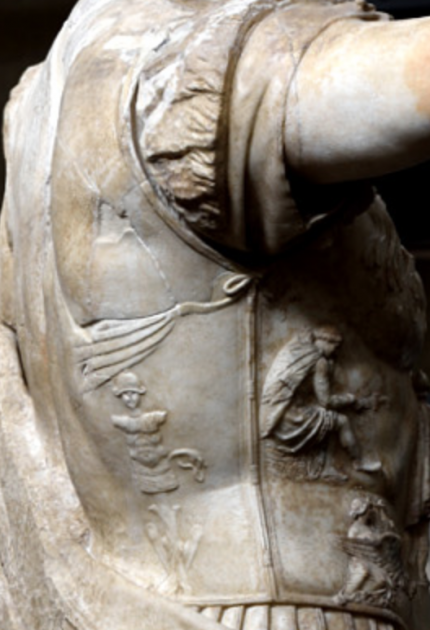Wednesday, April 18th, 2018
The Trophy on “Augustus of Prima Porta”

“Augustus of Prima Porta,” side view, a copy of a bronze statue of c. 20 BCE. Marble, height 6′ 8″ (2.03 m). Musei Vatican. Photograph by Ilia Shurygin used with permission.
Yesterday I was looking for a detail image of “Augustus of Prima Porta” to show to a student, and I came across an image that showed the back of the cuirass (breastplate). “Hold on! What is that?” I thought. I never knew that the back of the sculpture was decorated. Underneath Augustus’ arm you can see that there is a small object that looks like a figure. It appears in considerably lower relief than the figures on the front.
This figure is a Roman trophy (tropaeum). It is not a human figure, but it is an armored body with a helmet and breastplate that is put together on a tall pike to give off the semblance of a man. The armor is supposed to come from that of a defeated enemy. A similar trophy image, which includes the shields of defeated enemy soldiers, is located within a frieze from at the Temple of Apollo in Circo (Capitoline Museums).
I can’t tell what is projecting from the trophy of the Augustus of Prima though. Can anyone tell what is coming out from its left (our right) side?
This website explains that the back of the cuirass is not only decorated with a trophy, but also wings. From my perspective the imagery looks less like wings and more like some ribbon or string that is used to tie the cuirass together.
I’m curious as to why this trophy was included, especially if it might not have been in a location where the imagery would have been seen regularly (a metal rod in the back of the statue suggests that it was meant to be placed on a wall). Part of me wonders if there was some awkwardness at portraying this trophy with the armor of defeated enemies, since Augustus’ victory over the Parthians was won more through diplomatic means than actual fighting on the battlefield per se. Does anyone else have more information or theories regarding the inclusion of this trophy?


